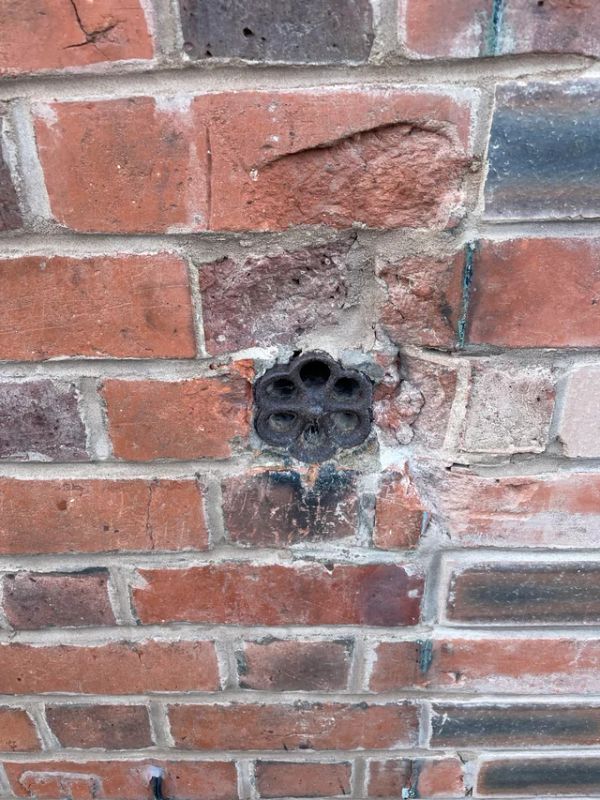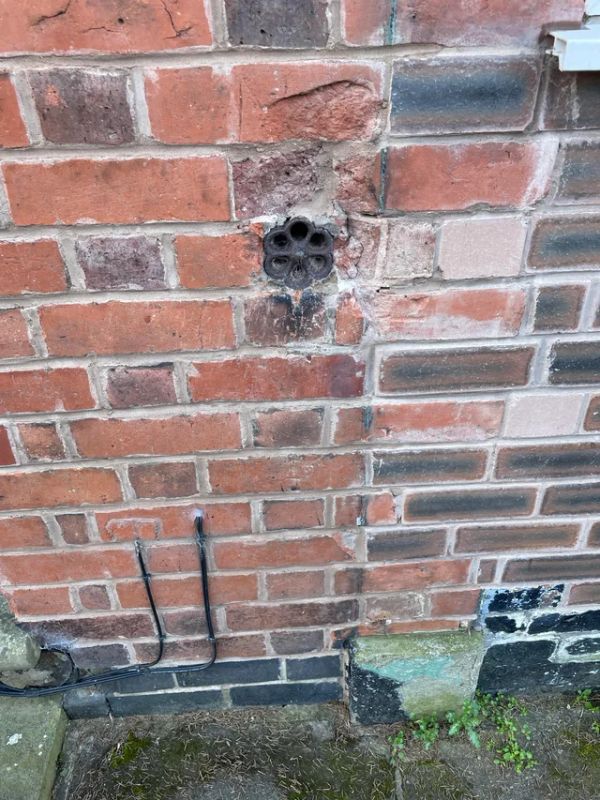Have you ever come across an intriguing iron object installed on the wall of your house and wondered what its purpose could be? If you have, you’re not alone. Many old houses, like the late-Victorian ones, often have unique features that leave homeowners puzzled. In this article, we’ll explore one such mystery: the iron flower-like thing found on the side wall of a 19th-century house in North West England.

Uncovering the Purpose
The iron object in question resembles a small flower and measures about 10cm wide. It sits approximately 1m above the ground. While some speculate about its purpose, let’s try to piece together the clues and unravel the mystery.
One possible explanation is that it could be an air vent or what is commonly known as an “Air Brick.” These vents help prevent condensation from accumulating in the void between the outer brick and the inner layers of the wall. By allowing air to circulate, they play a crucial role in preserving the integrity of the mortar. Given the damp climate of England, it is essential to safeguard the walls against moisture damage. It’s quite ingenious how people in the past used available resources, such as a hose bib handle, to fulfill this function.

The Construction of Late-Victorian Houses
To better understand the purpose of this iron object, let’s delve into the construction methods of late-Victorian houses. Unlike modern construction practices that employ cavity walls, houses from this era generally had solid walls. However, it’s crucial to consider that construction techniques varied across regions and even within the same house.

In the case of your house, it appears that there are different brick compositions and mortar in the photo, implying that the construction might have occurred in stages or after reconstruction. If your house is located near bustling cities like Liverpool or Manchester, it might have endured damage during the 1940s. As a result, it’s possible that cavity walls were introduced during the rebuilding process due to materials scarcity.
Other Possible Explanations
While the air vent theory seems plausible, some other theories have been proposed by curious individuals like yourself. Some speculate that it’s a fancy weep hole, which serves as a drainage point for moisture. Others believe it could be a vent cover of some sort, providing airflow to the interiors. Additionally, the marks on the adjacent wall suggest that there might have been a connection to another building, such as a greenhouse or potting shed. Interestingly, some even argue that it serves as a deterrent for mice, though the gaps between the iron object seem too wide for effective prevention.
Unraveling the Mystery
While we may never know the exact purpose of this iron flower-like object on your late-Victorian house, it’s fascinating to dive into the rich history and construction practices behind these architectural marvels. These unique features not only add character to your home but also connect you to a bygone era. So, the next time you come across a mysterious iron object on your house wall, take a moment to appreciate the craftsmanship and creativity of the past. After all, it’s these small details that make your home truly special.
Note: The information provided in this article is based on observations and theories. The true purpose of the iron object may vary depending on specific circumstances.





